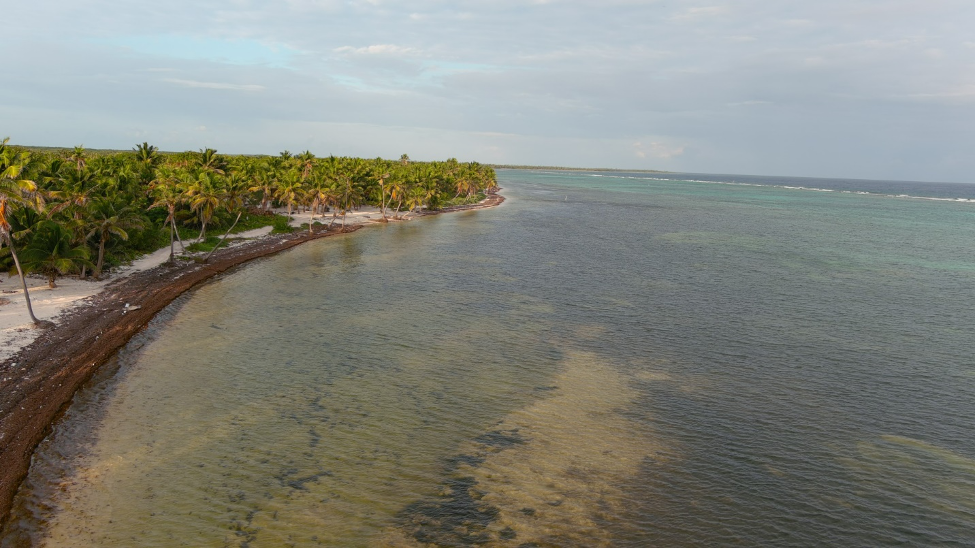Decaying sargassum caused a seagrass die-off in the area pictured above. Photo: Dr. Addiel Perez
Shifts in a bonefish pre-spawning aggregation (PSA) in northern Belize that BTT scientists and collaborators have been monitoring since 2016 are cause for concern. A tagging study demonstrated that this location on Ambergris Caye hosts bonefish that migrate from home ranges in Mexico and northern Belize, making it critically important to the regional bonefish fishery. Unfortunately, the location of the PSA is shifting southward. This means that it could become inaccessible to bonefish in Mexico that have spawned there for generations, and move outside Bacalar Chico Marine Reserve and close to flats habitats threatened by development.
BTT scientists believe that one reason for the shift is the sargassum that has inundated the coast over the past 10 years. Vast sargassum mats shade and cover seagrass, killing large areas of seagrass between the reef and shoreline. When the sargassum eventually dies, the decay process rapidly depletes the oxygen in the water, killing everything that can’t escape the area, including seagrass, shrimp, crabs, and fish. Even if the sargassum isn’t present when the bonefish migrate to this area to spawn, the ecology of the area has been degraded and is no longer suitable for the PSA.
The second reason behind the shift is that anglers and guides continue to fish the PSA, which stresses the fish. Interrupting spawning behavior by fishing changes fish behavior, and it’s likely that the PSA has moved from the original location in part to avoid this fishing pressure. However, even as the PSA moves, the fishing pressure continues, which may further impact the behavior of the bonefish. A third reason could be natural events coupled with weather patterns and climatic changes associated to tides and currents.
Although the bonefish in the PSA aren’t being harvested, it’s likely that many of the released bonefish die because the large number of bonefish in the PSA attracts predators. And stress that reduces spawning success is also a concern. Other species that form spawning aggregations, like groupers and snappers, that have been targeted at the spawning aggregations have seen population declines due to lower spawning success.
For these reasons it is important for BTT to continue collaborating with the flats community, tour-guide associations, and resource managers to generate more science to inform decision-making and strategies to better conserve and manage the flats fishery in Bacalar Chico Marine Reserve.




